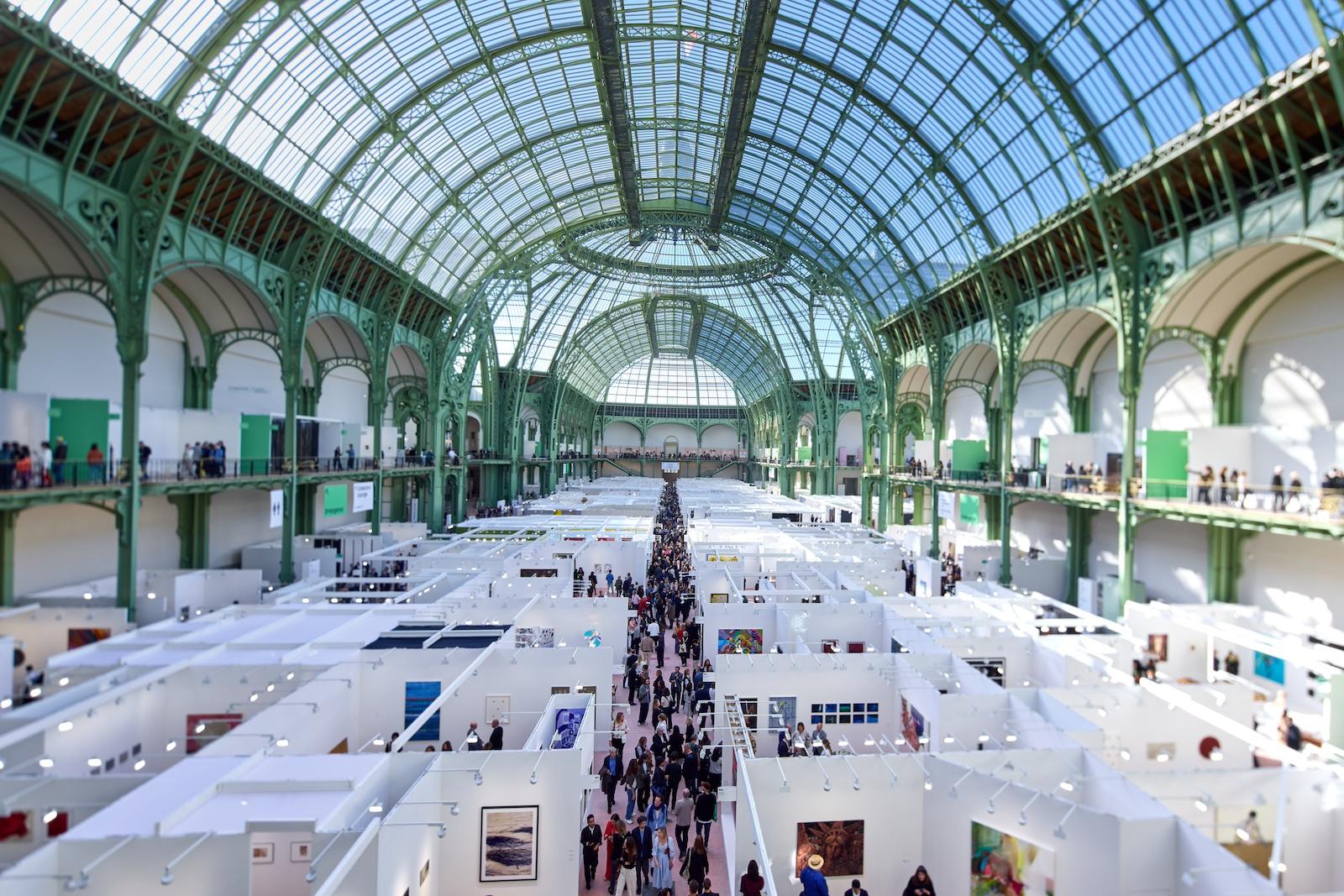
Art Basel Paris 2024 at the Grand Palais.
Built for the Universal Exhibition in 1900, the Grand Palais is a historic French landmark. A massive Beaux-Arts building with an incredible iron, steel, and glass barrel-vaulted roof, it’s now the home to Art Basel Paris, which triumphantly opened to VIP visitors on October 16th and ran through October 20th.
“We worked on Art Basel Paris’ 2024 edition for over two years; seeing it come to life in such an extraordinary way in the heart of Paris has felt truly special,” Art Basel Paris Director, Clément Delépine, shared with Art & Object. “Our galleries, partners, collectors, and visitors have all contributed to the undeniable enthusiasm we have witnessed across the city, and I am immensely grateful for their support.”
Spectacularly lit by the exposed skies above, the 2024 edition of the fair— the first in this recently renovated venue— featured 195 galleries from 42 countries and territories, including 65 galleries operating spaces in France. Roaming the aisles and exhibitors’ booths on the lofty upper levels and nearer to the earth on the ground floor, we compiled a curated list of our favorite artworks— both brand new and slightly old— numbered, in no particular order, below.
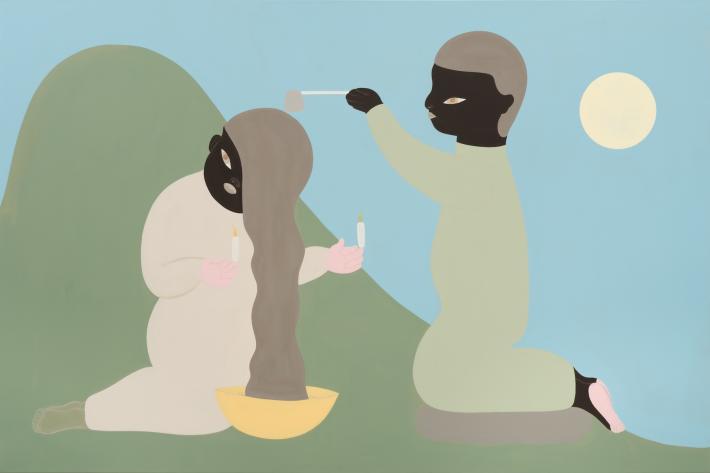
A figurative painter employing folkloric imagery with androgynous characters engaged in ritualistic activities, Asuka Anastacia Ogawa draws upon her mixed Japanese and Brazilian heritage for her charming, pseudo-naïve style works. Born in Japan to a Japanese father and Brazilian mother, the artist was raised in Brazil and Swedenl, and educated in London, before finally splitting her time between New York and Los Angeles. Mining her migratory experiences in her narrative works, she references cultural myths and spiritual practices of the places she has lived.
Image: Asuka Anastacia Ogawa, Sunday, 2024.
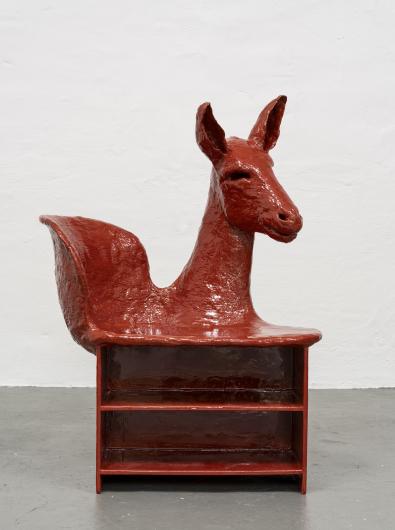
Taking readymade chairs and shelves as the point of departure, Nuri Koerfer transforms them into unique works of art by adding animal forms, and in the works on view at the fair, it’s specifically donkeys. Molded in paper mâché and covered or glazed in epoxy, the donkeys add a mystical narrative to the appropriated furniture, while it still remains functional for its new owner.
Donkeys have historically been used to carry and transport goods in various cultures worldwide. With her witty social sculptures, the Swiss artist honors the noble beast by giving it the role of transporting us to imaginary realms while resting in her colorful chair and eternally caring for our objects placed on monochromatic shelves.
Image: Nuri Koerfer, Thron Gestell (seat and shelf, donkey, red), 2024.
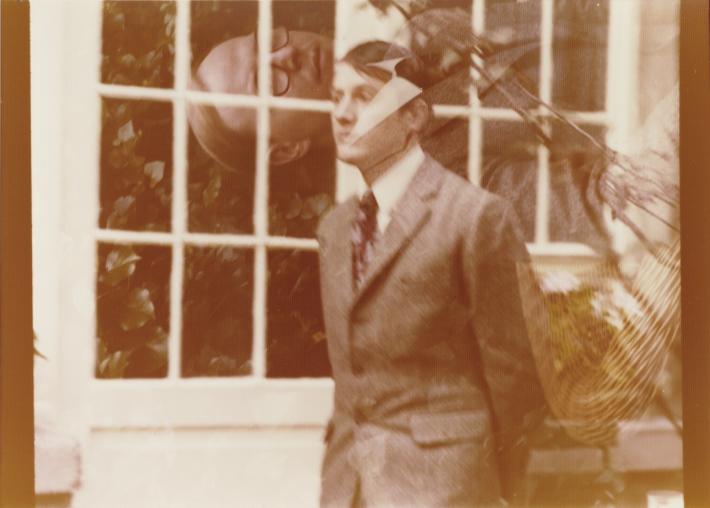
A few years after meeting Gerhard Richter during their initial solo show with the esteemed Konrad Fischer Gallery in Düsseldorf in 1970, Gilbert & George asked Richter if he would consider painting their portraits. Richter resisted, but Gilbert & George persisted. In 1975, Richter finally consented, taking 10 photographs of the duo in his garden as preparatory studies for a series of oil paintings.
Photographing Gilbert & George from multiple angles and making multiple exposures to have their faces overlap, he mixed them into the garden environment. The resulting paintings portrayed the pair in overlapping imagery, but the canvases did not directly replicate the photographs, which are a standalone, highly unique body of work.
Image: Gerhard Richter, Gilbert & George, 1975.
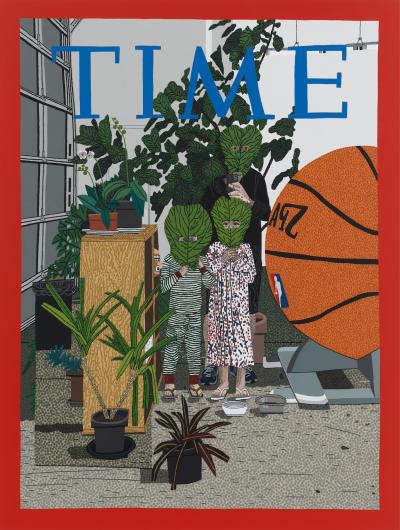
The subject of a current solo show at Gagosian in London, Jonas Wood is widely known for his boldly colored graphic works that combine art historical references with the objects, interiors, and people essential to his life. Breaking his pictures down into layered compositions of geometry, pattern, and color, he turns the three-dimensional world around him into flat planes of color and line.
His Gagosian exhibition mixes landscapes and cityscapes with interior and exterior domestic scenes, including a painting of his wife and children hiding behind masks, (Shio, Momo, and Kiki with Leaf Masks), which relates to this recent painting in Karma’s booth at the fair. However, the painting Momo, Kiki, and Me in Mungo's Time Mirror has an added element, one of his artist friend Mungo Thomson’s Time mirrors, which whimsically reflects Wood and his children in a surprisingly similar way.
Image: Jonas Wood, Momo, Kiki, and Me in Mungo's Time Mirror, 2024.
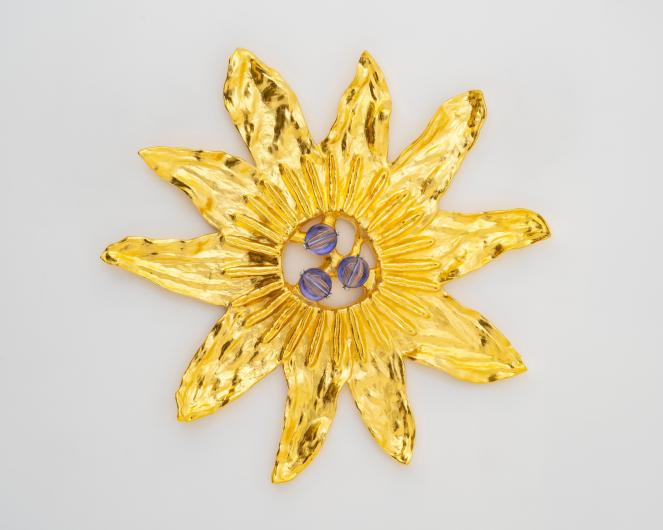
Turning the ancient craft of glassmaking into a conceptual art form, French artist Jean-Michel Othoniel was initially motivated to make beaded glassworks to comment on the loss of lives during the AIDS crisis, but has since created artworks and installations that interact with history, sites, and other issues in equally compelling ways.
Exhibiting internationally since the late 1980s, Othoniel has created permanent projects for several high-profile places, including the Château de Versailles, where he made gilded fountain sculptures for the site’s sumptuous gardens. His gold-leafed, cast-aluminum Passiflora relief, with glistening Murano glass balls at its center, continues the Parisian artist’s interest in the floral form, while creating a marvelous, jewel-like sculpture.
Image: Jean-Michel Othoniel, Passiflora, 2024.
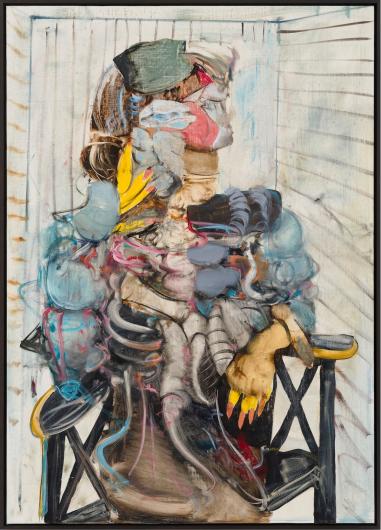
Blurring the line between figuration and abstraction, Adrian Ghenie mixes the personal with the political and art historical in his convoluted, painterly portraits. One of the most celebrated painters to graduate from the venerable University of Art and Design in Cluj, Romania, the Berlin-based artist represented his Romanian homeland at the 56th Venice Biennale in 2015.
What better time than a year after the 60th anniversary of Pablo Picasso's death and during the 100th anniversary of the birth of Surrealism to paint a portrait of Picasso’s scorned lover, Surrealist photographer and painter Dora Maar (her photos are featured in the Centre Pompidou’s prodigious Surrealism exhibition). Mimicking Picasso’s 1937 portrait of his muse seated in an armchair in a linear patterned room, Ghenie lets all of Maar’s pent-up venom out in a flurry of beautifully calculated brushstrokes.
Image: Adrian Ghenie, Dora Maar, 2024.
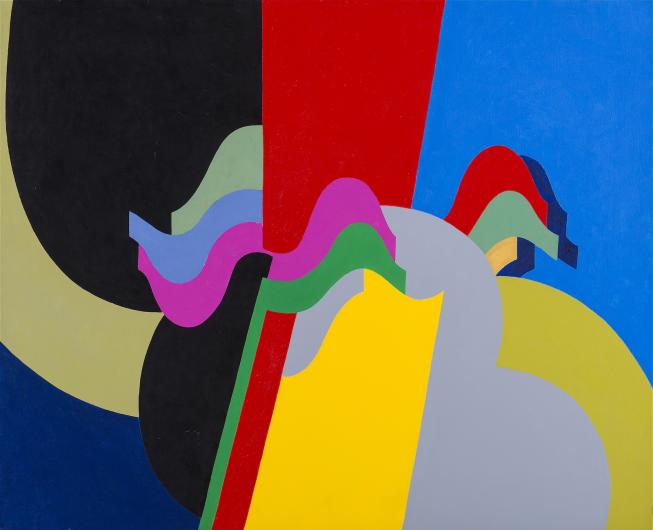
Mohammed Melehi, a Moroccan modernist painter, was a leading figure in Arab abstract art. Best known for his wave paintings, he was associated with the Casablanca School, an avant-garde movement active in Morocco in the 1960s. Living abroad for 10 years, he participated in the emergence of abstract art movements in Rome, Paris, and New York.
The subject of surveys at the Bronx Museum of Art in New York in 1984 and the Institute de Mode Arabe in Paris in 1995, and a major retrospective exhibition at Mathaf: Arab Museum of Modern Art in Doha, Qatar, in 2017, Melehi died from COVID-19 at the beginning of the pandemic’s outbreak in 2020. At the fair, the Morocco-based gallery presented a stellar selection of his paintings, including this 1994 abstract wave painting and several early works that had never been seen.
Image: Mohamed Melehi, Untitled, 1994.
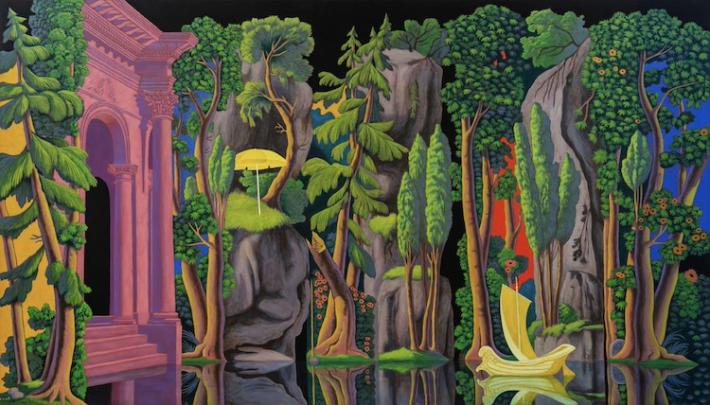
Creating imaginary landscapes from analog and digital imagery that he has gathered over the years, Martin Jacobson starts with collages, which he uses as the point of departure for his realistically rendered paintings. A 2005 graduate of the Malmö Art Academy, the Swedish artist references dreams, myths, and archetypical images in his psychologically charged, saturated realms. Constructing theatrical worlds on canvas, paintings like My Future Home IV playfully place lakeside Greek temples in lush forests with multicolored skies. Surreal scenarios based on found pictures, Jacobson’s vibrant paintings take viewers on adventures that could only exist in art.
Image: Martin Jacobson, My Future Home IV, 2024.
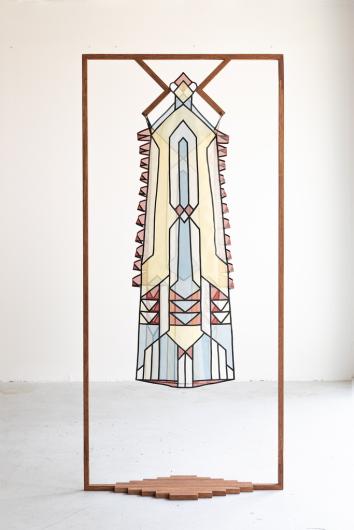
A multifaceted Mexican artist who has been an artist-in-residence at the Rijksakademie in Amsterdam, de la Cité internaltionale des Arts in Paris, and Casa Wabi in Mexico, Mauricio Limón has been creating projects and exhibiting internationally for nearly two decades. Working in various media, Limón examines the interweaving of identity, politics, culture, and humor within contemporary art.
For his haute couture silk and leather dresses presented in handcrafted wooden frames, Limón collaborated with Dutch costume designer Adriana Hulshof to make costumes inspired by Art Deco stained-glass windows that could be used in performances and still exist as part paintings and part sculptural objects. Employing stark geometrical forms, pure colors, zigzags, and straight lines, the sublime series takes elements of Art Deco architecture to new heights.
Image: Mauricio Limon, Janskerhof 9, 2021, in collaboration with Adriana Hulshof.

Exploring dystopian worlds, Jan Eustachy Wolski paints narrative canvases that blend figuration with abstraction and sci-fi elements with cinematic scenes to present fantasy realms shaped by advancing technology and societal decay. Rendered like epic history paintings while incorporating film narratives, his scenarios are set in the future, yet mirror the past.
His monumental six-panel painting, Pelexiton (Excerpts 1 to 6), which took months to make, takes viewers from an industrial age where workers toil and suffer to an AI-generated sphere where the future gets uncomfortably fuzzy. At the center of the painting is a beating heart, which turns cold when AI takes over in the fourth panel, but it makes a faint resurgence as a figure raises its head from a foggy marsh.
Image: Jan Eustachy Wolski, Pelexiton (Excerpts 1 to 6), 2024.
Paul Laster
Paul Laster is a writer, editor, curator, advisor, artist, and lecturer. New York Desk Editor for ArtAsiaPacific, Laster is also a Contributing Editor at Raw Vision and Whitehot Magazine of Contemporary Art and a contributing writer for Art & Object, Ocula, Galerie, Artsy, Sculpture, Time Out New York, Conceptual Fine Arts, and Two Coats of Paint. Formerly the Founding Editor of Artkrush, he began The Daily Beast’s art section and was Art Editor at Russell Simmons’ OneWorld Magazine. Laster has also been the Curatorial Advisor for Intersect Art & Design and an Adjunct Curator at P.S.1 Contemporary Art Center, now MoMA PS1.























